Top attractions:
PAN Nature Park in Lithuania
In 2011 Čepkeliai State Strict Nature Reserve together with Dzūkija National Park became the first and the only PAN (Protected Area Network) park in Lithuania. PAN Parks Foundation was founded in 1998, based on Yosemite National Parks model in North America, with an aim to protect the wilderness of Europe. Though organization ceased to exist in 2014, the status of being one of the only 13 such parks in Europe, shows the great importance and uniqueness of Čepkeliai Marsh and Dzūkija National Park.
Čepkeliai State Strict Nature Reserve is also a part of other important international nature preservation programs as NATURA 2000 and the Ramsar Convention.
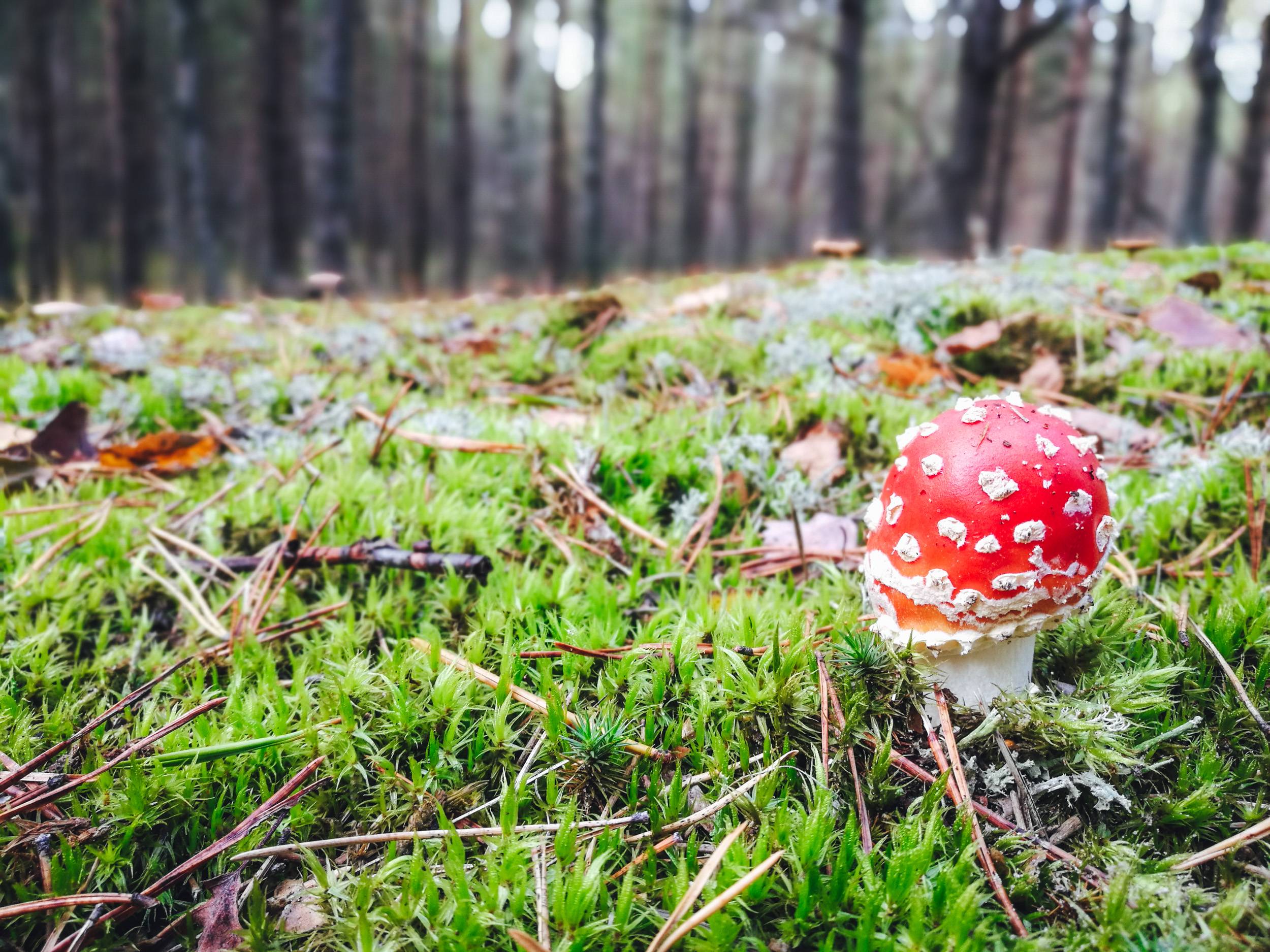
Amanita Muscaria are exceptionally beautiful but deadly mushrooms. Photo by Alis Monte [CC BY-SA 4.0], via Connecting the Dots
Čepkeliai Marsh Details
- Region: Dzūkija (Dainava)
- Established: 1975
- Area: 112.3km² / 43.35mi²
- Train station: Marcinkonys
- Train tickets: Vilnius – Marcinkonys
- Coordinates: 54°0′N 24°31′E
- Distance from Vilnius: 111.5km / 69.28mi
- Distance from Kaunas: 150.1km / 93.26mi
- Distance from Minsk: 237.8km / 147.76mi
- Permit: Yes (April 1st – July 1st)
- Accomondation: Vinius, Druskininkai & Marcinkonys
- Weather: Marcinkonys forecast

How to Visit Čepkeliai Marsh
Being a reserve, it is natural that access to Čepkeliai Marsh is limited. Going off the educational Čepkeliai path requires a guide and registration in advance. During the bird breeding season (April 1st – July 1st) the amount of people allowed to visit Čepkeliai educational path is also limited and requires a guide. Please, respect these rules and protect the local wilderness. You can register your visit in the official Čepkeliai Nature Reserve website.
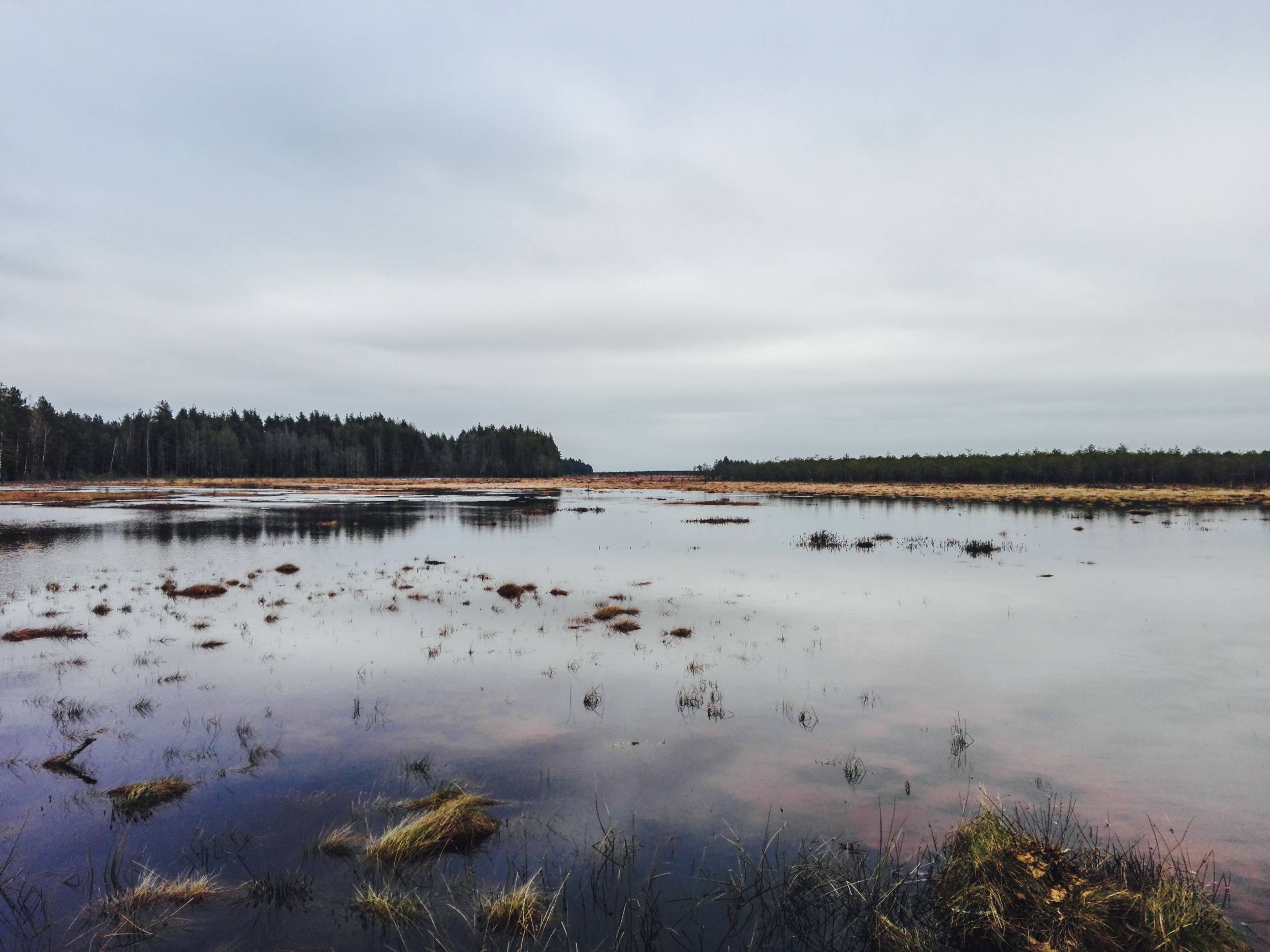
Čepkeliai Marsh in early spring. Photo by Alis Monte [CC BY-SA 4.0], via Connecting the Dots
Geography of Čepkeliai Marsh
Čepkeliai marsh, or Čepkeliai mire, are the biggest wetlands in the whole Lithuania. It includes many small islands and even lakes within. Čepkeliai Marsh is surrounded by inland dunes, overgrown with forests, which are in a matter of fact the core of Dainava Forest. The wetlands has formed in the area between three beautiful small rivers: Ūla, Grūda and Katra, each being a destination worth attention on its own.
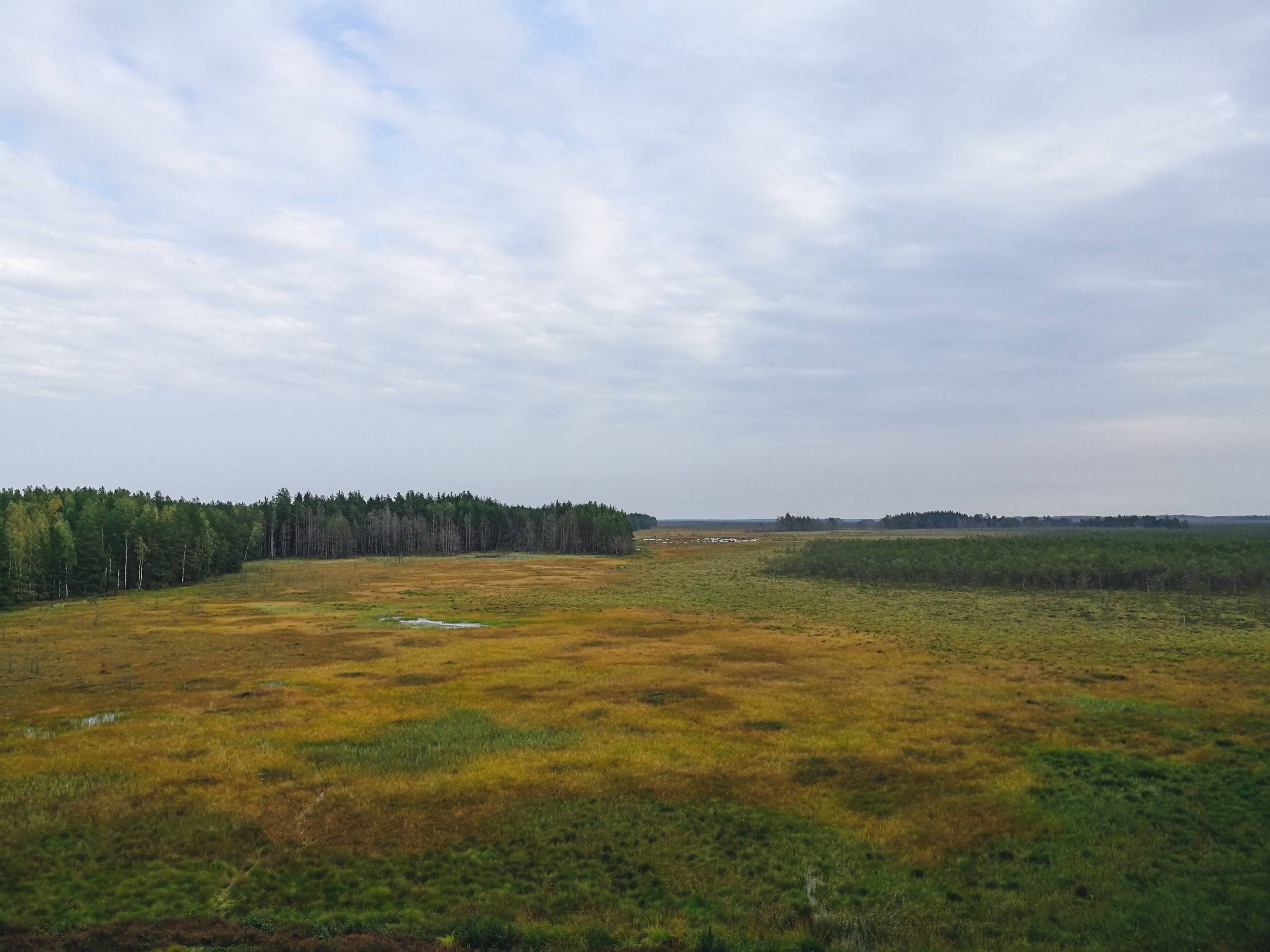
Čepkeliai Marsh in early autumn. Photo by Alis Monte [CC BY-SA 4.0], via Connecting the Dots
The reserved area of Čepkeliai marsh has unique conditions, thus the nature and the lifeforms living within it are unique as well. During the summer, Čepkeliai is probably the warmest place in Lithuania. Due to the humidity, thunderstorms are more frequent than anywhere else. The main area of Čepkeliai marsh varies from flood-meadows, transitional meadows, bogs and fens, surrounded by inland dunes – covered by pines and swamps.

A swamp in the forest, surrounding Čepkeliai marsh in early spring. Photo by Alis Monte [CC BY-SA 4.0], via Connecting the Dots
Flora and Fauna in Čepkeliai Nature Reserve
From the old days Čepkeliai are famous for naturally growing cranberries. naturally, there are plenty of plant and animal species could be found in the area. Especially important are: lady’s-slipper orchids, cutleaf anemones, cranes, black grouses, wolves, lynxes and western capercaillies, which could be found the logotype of Čepkeliai State Strict Nature Reserve. This is only a small portion of the protected wildlife in the area.
In total 188 species of birds, 2540 invertebrates and 41 mammals could be found in the area surrounding Čepkeliai marsh.
Bird-watching in Čepkeliai Marsh
Čepkeliai Marsh Nature Reserve has one of the biggest bird variety in Lithuania. A minimal human activity opens many doors for niche specialists like woodpeckers. In the forests surrounding Čepkeliai Marsh you’ll find virtually every species of them that could be found in Lithuania. Without the birds mentioned before, the area has healthy population of black storks, corn crakes, boreal owls, eurasian eagle-owls, short-toed snake eagles, hoopoes and other coraciiformes.
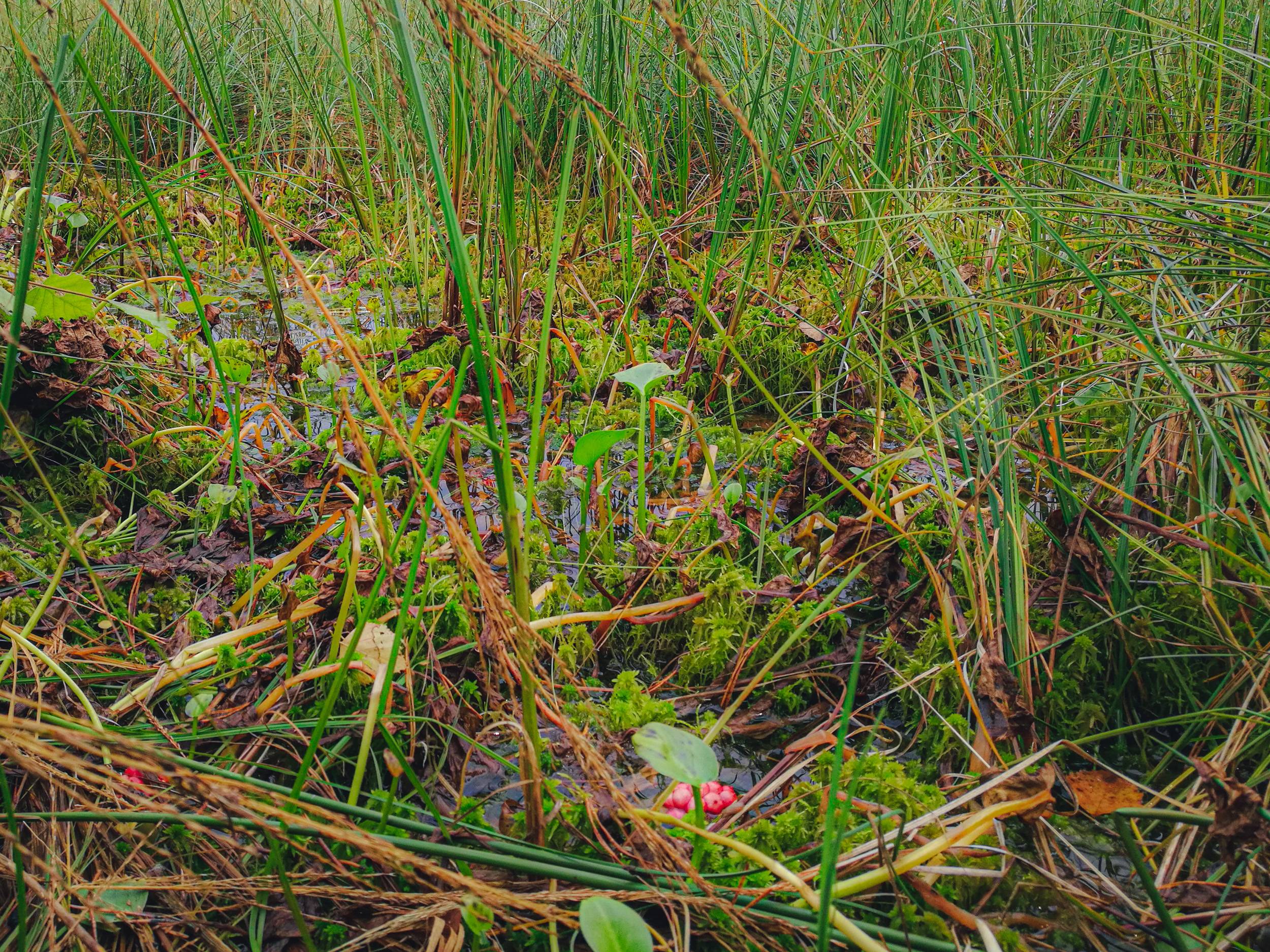
Čepkeliai marsh is famous for naturally growing cranberries. Photo by Alis Monte [CC BY-SA 4.0], via Connecting the Dots
Čepkeliai State Strict Nature Reserve
In the densely populated Europe, such a natural wilderness – barely touched by humans – is not that easy to find. That is more than enough for the international recognition and protection Čepkeliai Marsh and Dzūkija National Park gets. The rules in the reserve are very strict; It is forbidden to cut or plant trees, the forests are not being cleaned, hunting is forbidden, gathering is only allowed to the local populations and visitors are fairly limited. The are is left to its natural life as much as possible.
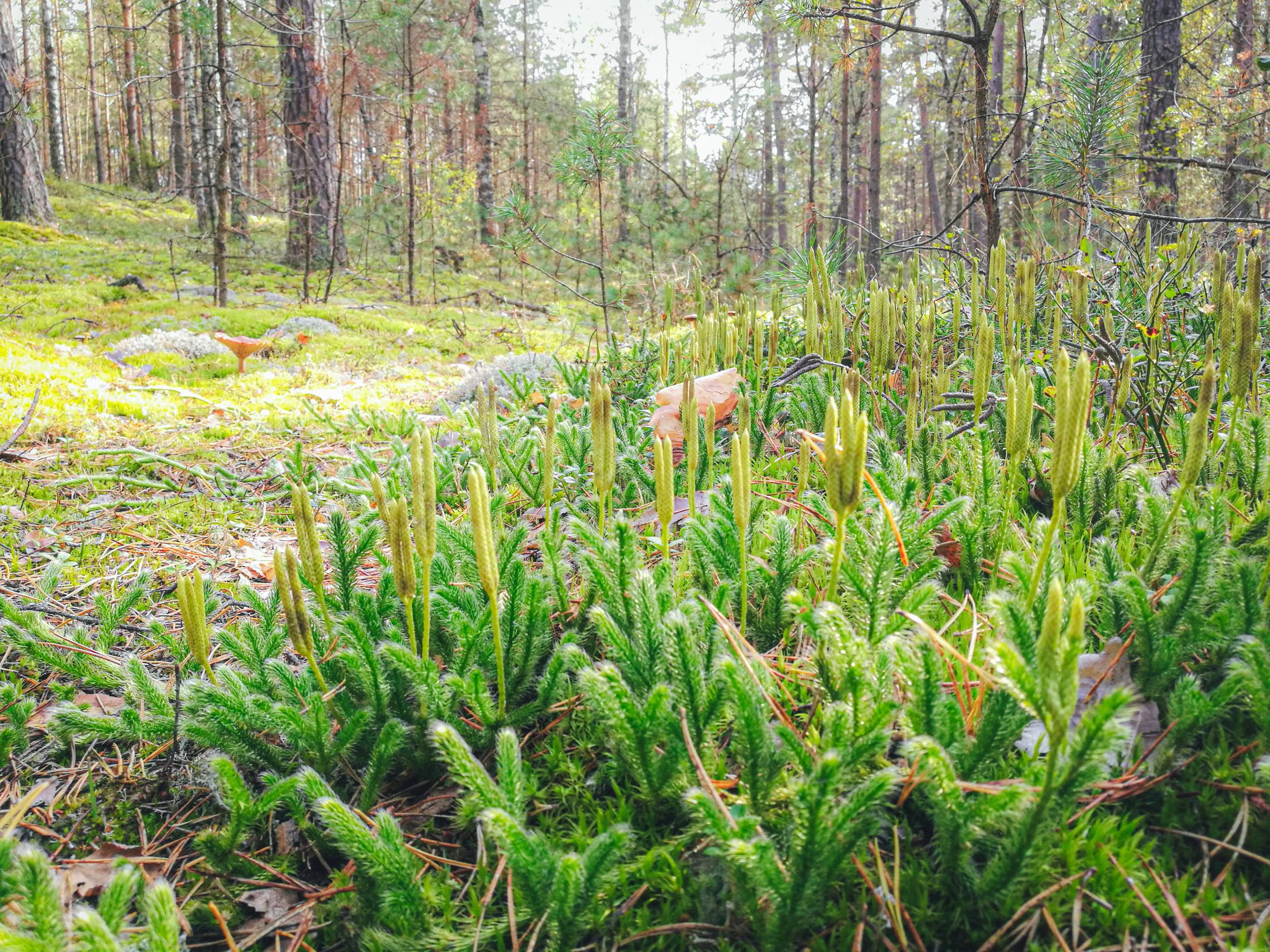
Dzūkija is famous for mushrooms but it is not shy of other lifeforms as well. Photo by Alis Monte [CC BY-SA 4.0], via Connecting the Dots
Čepkeliai Educational Path
Walking from Marcinkonys to Čepkeliai marsh through remote Dainava woods could be very rewarding. Various birds could be heard and some mammals could be seen, but despite all the marvels of forest, Čepkeliai Educational Path is the reason why the most visitors come here. Though the route is only 1.5km. the unique nature of this environment will suffice. The circular route starts at Čepkeliai march viewpoint tower and takes to a path built over the march itself. The track goes back through a forest and dunes to introduce the full richness of this unique landscape.
Note that at the moment Čepkeliai Educational Path is closed for reconstructions!
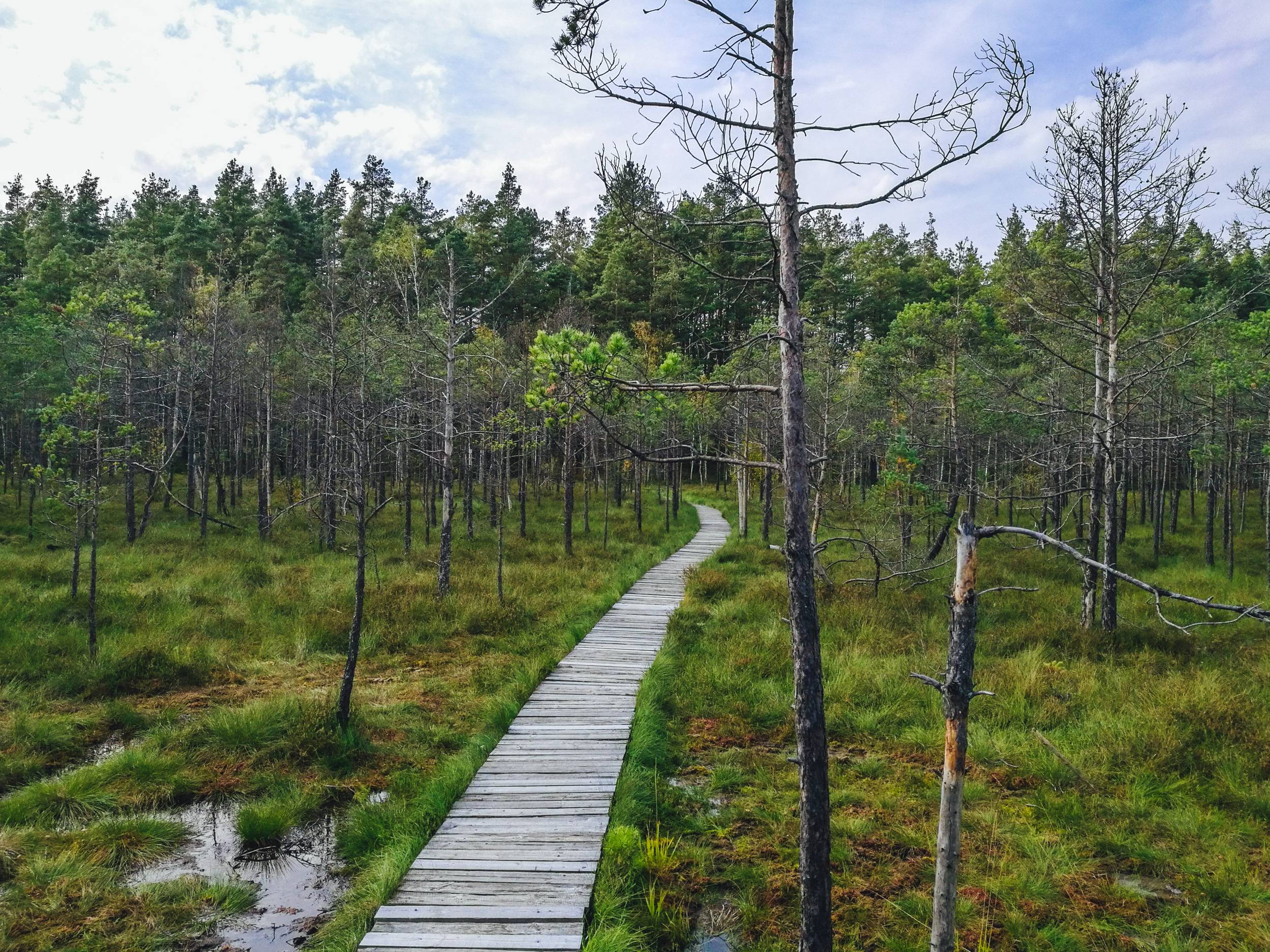
Čepkeliai Educational Path takes over Čepkeliai marsh itself. Photo by Alis Monte [CC BY-SA 4.0], via Connecting the Dots
How to get to Čepkeliai Marsh
Čepkeliai Marsh Nature Reserve and Dzūkija National Park are relatively well connected to the Capital of Lithuania – Vilnius. There are 3 main ways to get to Marcinkonys and Čepkeliai Marsh.
Getting to Čepkeliai by Train
There are 2 trains going from Vilnius to Marcinkonys and back each day. The journey takes about 2 hours, the schedule and the tickets could be found here.
Getting to Čepkeliai by Bus
The journey with bus takes as much time as train but the views are not going to be as good. The only direct bus Vilnius – Varėna – Druskininkai goes twice a day. The schedule and tickets could be found here.
Getting to Čepkeliai by Car
Follow the direction to either Alytus or Varėna. For example: from Vilnius, the A4 road will take you to Varėna and from there follow the only road going through Marcinkonys – 5003.
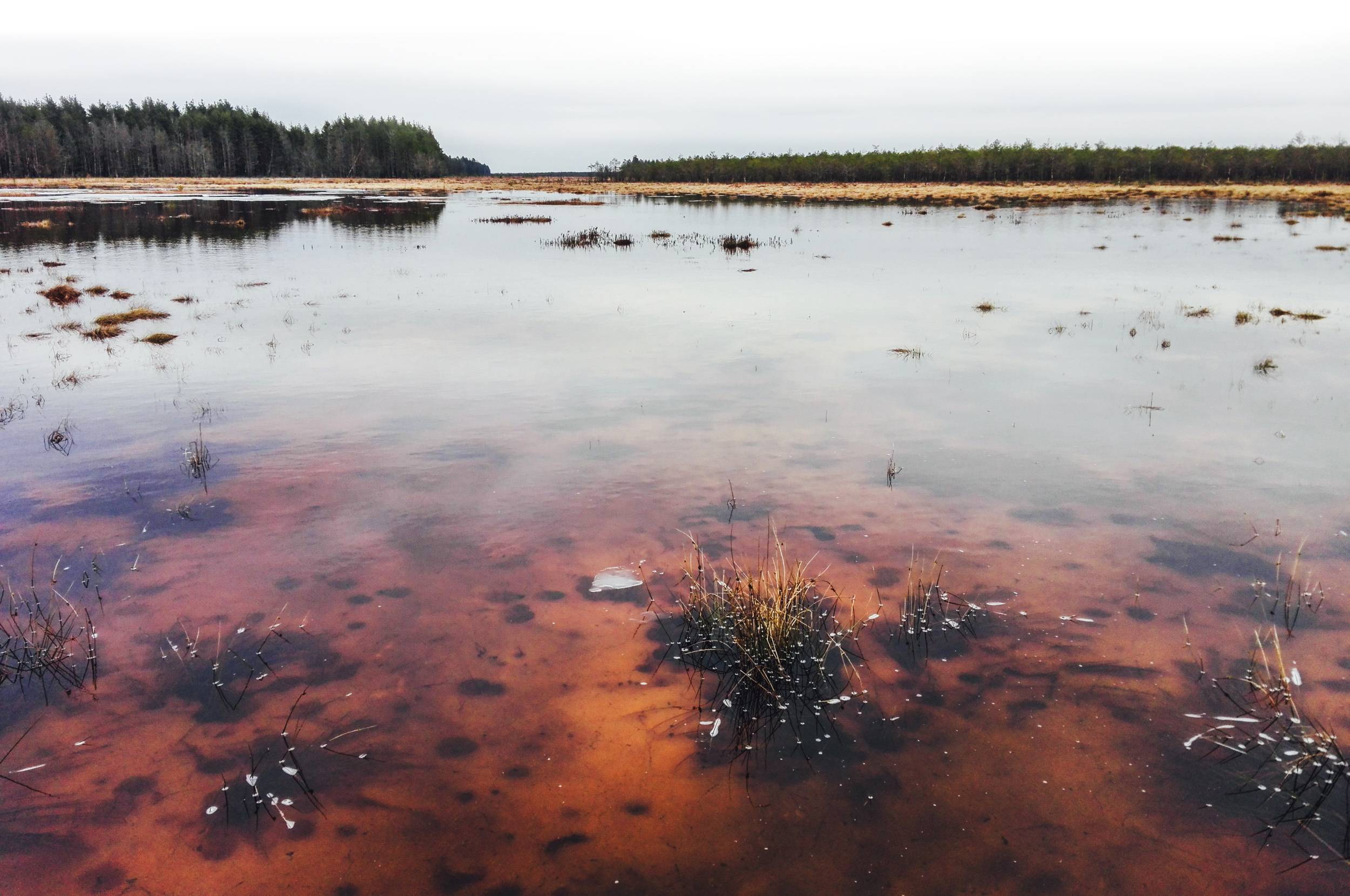
Red bed of an uncovered Čepkeliai Marsh during the early spring. Photo by Alis Monte [CC BY-SA 4.0], via Connecting the Dots